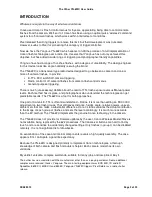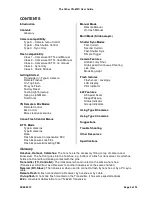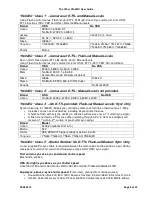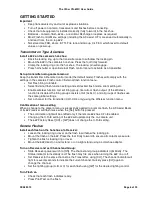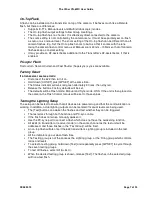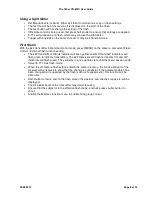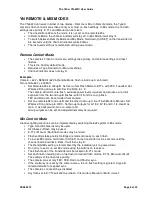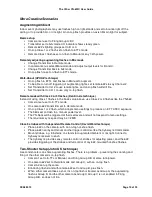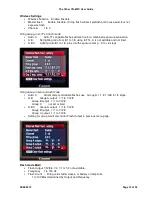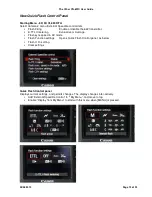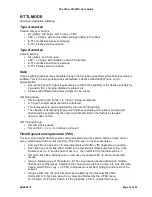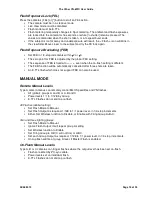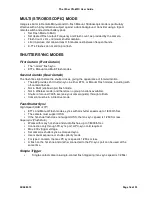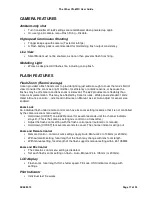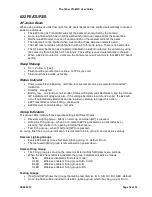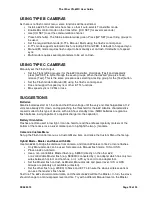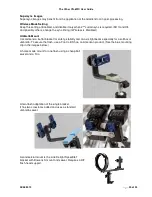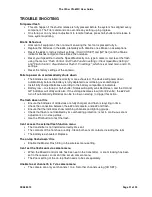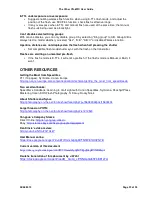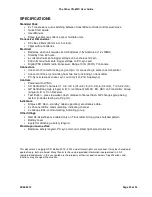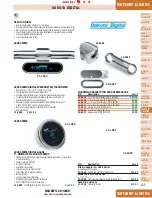
The Other YN-622C User Guide
28/08/2013
Page 14 of 23
E-TTL MODE
Automatic Adjustable Metering
Type A cameras
Camera menus or buttons
•
All (global), A:B (ratio), A:B C (ratio + FEC)
•
FEC +/- 2 stops, with on-flash FEC settings adding to the result.
•
E-TTL modes Evaluative or Average
•
E-TTL Flashes emit a pre-flash
Type B cameras
Camera buttons
•
All (global), no Canon ratio.
•
FEC +/- 2 stops, with additive on-flash FEC setting
•
E-TTL modes Evaluative or Average
•
E-TTL Flashes emit a pre-flash
Ratio
Canon’s lighting ratio becomes available through the Firing Group settings, when Wireless mode is
enabled. This is the true professional multi-preflash “effective reflected light” ratio, not an
approximation.
•
Ensure that the light output requirements are within the capability of the flashes, possibly by
increasing ISO, changing distance to subject, etc.
•
Flashes with different maximum outputs can be mixed.
A:B Firing Group
•
Set the lighting ratio from 8:1 to 1:8 (in 1/2-stop increments)
•
A “normal” subject exposure will be calculated.
•
This total exposure can be adjusted by the over-all FEC setting.
•
The effective reflected light from group A flashes (including on-top flash) and group B
flashes will be evaluated by the camera and transmitted to the flashes by the 622.
•
Group C does not fire.
A:B C Firing Group
•
Set A:B ratio as above.
•
Set an FEC (-, 0 or +) for flashes in Group C.
Flash Exposure Compensation (FEC)
The over-all automatic flash exposure can be adjusted using the camera button or flash control
menu, combined with the on-flash setting. (This improves on Canon procedures.)
•
Camera FEC can be set in 1/3-stop increments within 2 or 3, depending on camera.
•
Each flash has its on-flash FEC added to the camera-calculated output level. E.g. if the
camera is set to -2, and the flash is set to +1, then total FEC for that flash will be -1.
•
Set all on-flash FEC settings to zero, and use only camera FEC, to avoid unexpected
results.
•
Using a lighting group of All (A+B+C), E-TTL can produce uneven lighting with multiple
flashes due to differences in ambient light, flash power, distance, angle, etc. One flash can
have a small FEC of, say, +1/3 FEC to balance more ambient hitting the other side of the
subject.
•
Using an A:B ratio, the ratio effect will be modified by the individual flash FEC.
Under A:B C, C flash can be set to a value, and trimmed by the C FEC menu.
Or, Camera -2 FEC plus C flash -2 FEC produces -4 FEC – greater than usual.


